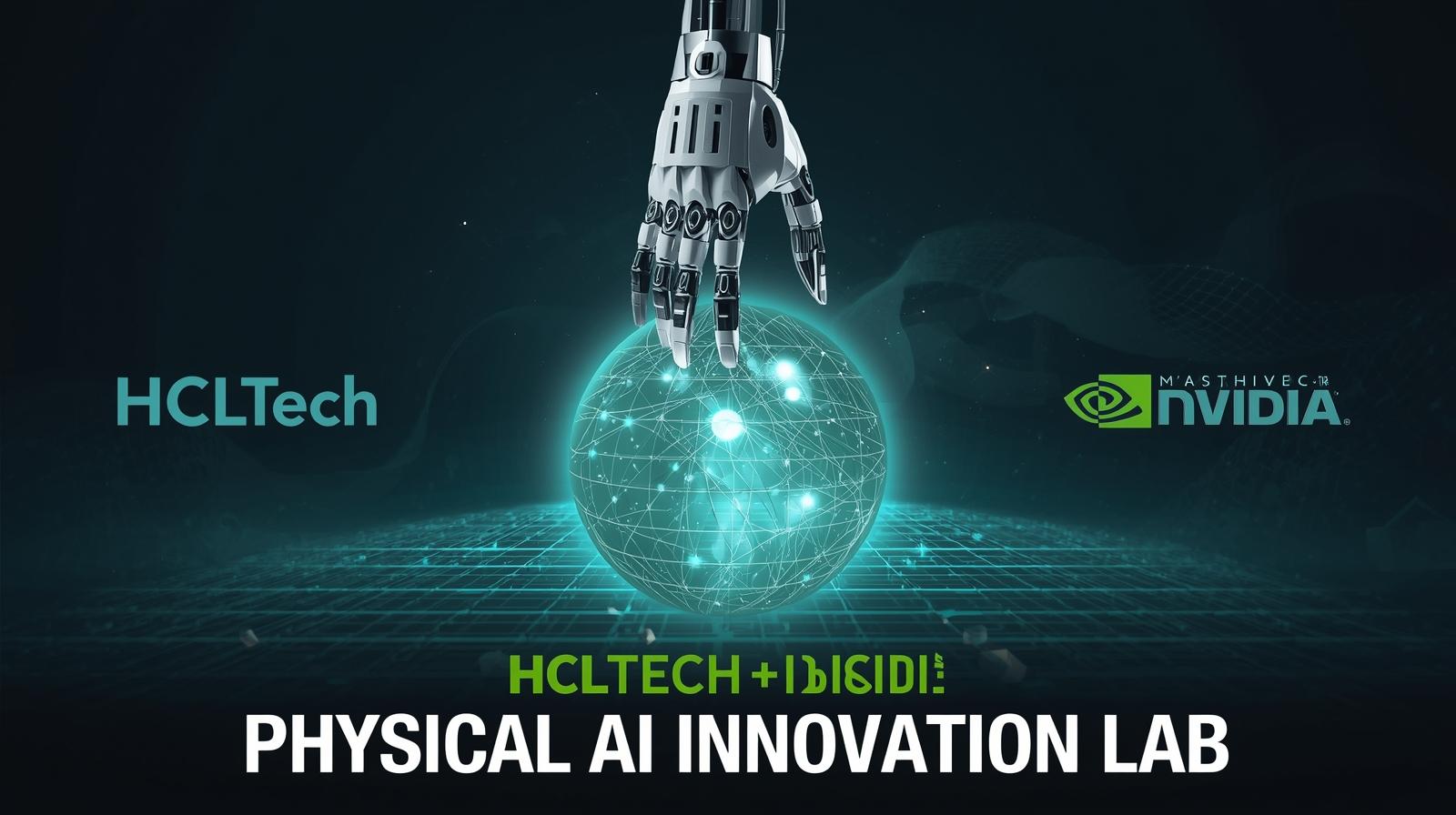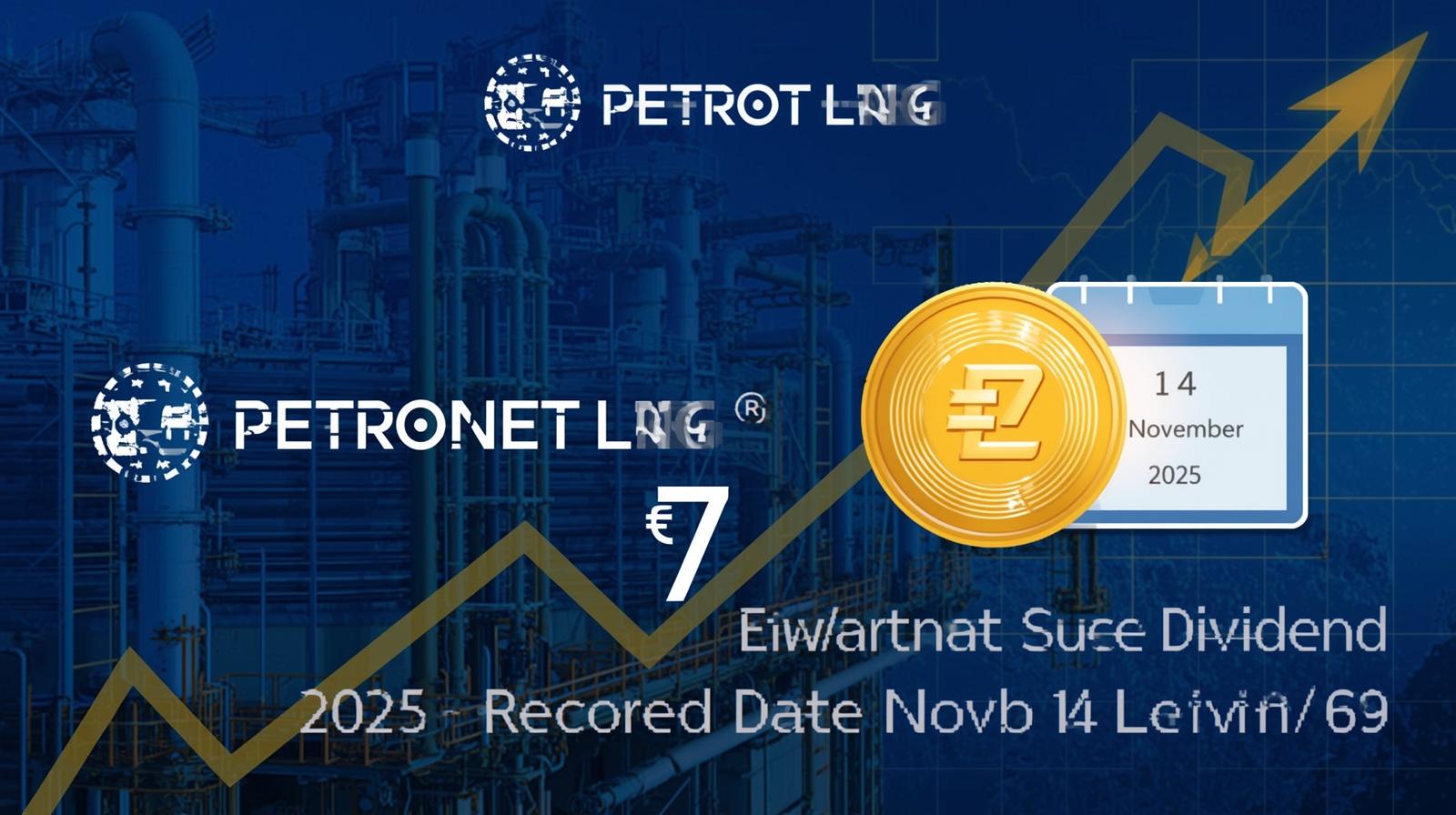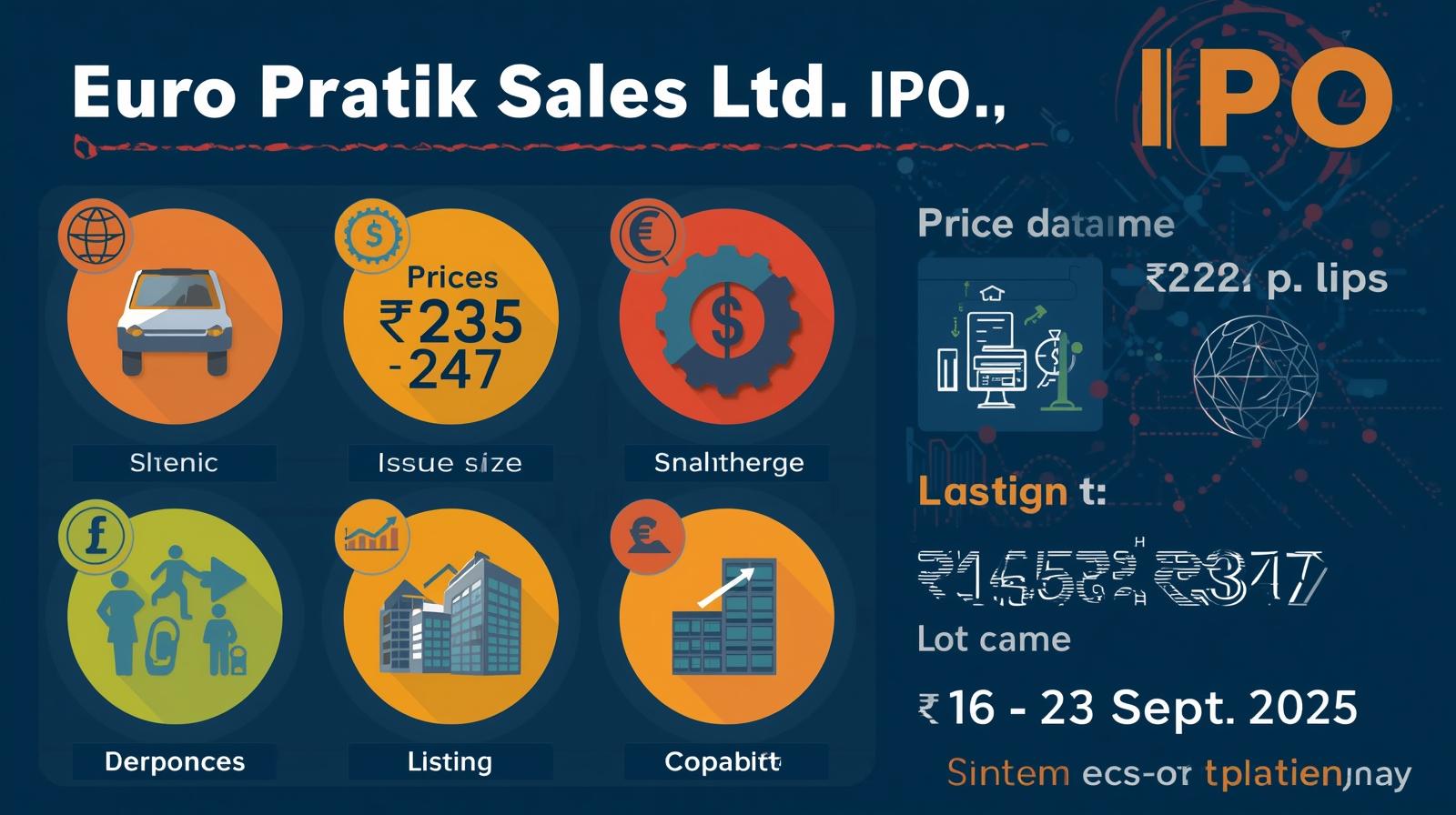HCLTech NVIDIA AI lab
HCLTech and NVIDIA have launched a Physical AI Innovation Lab to accelerate the move from simulation to real-world robotics and edge deployments. This analysis evaluates the business rationale, potential revenue upside, execution risks and three timeline/revenue scenarios investors should watch.
Key facts: on HCLTech NVIDIA AI lab
- Collaboration focused on physical AI (robotics, digital twins, edge AI, simulation → production).
- Expected to leverage NVIDIA platforms (Omniverse, Isaac Sim, Jetson, Holoscan) and HCLTech platforms/IP (VisionX, Kinetic AI, IEdgeX, SmartTwin).
- Strategic aim: enable enterprise customers to pilot, validate and deploy robotics and edge AI solutions faster by combining simulation, systems integration and edge inference.
Investment — Why this matters (HCLTech NVIDIA AI lab)
- Move up the value chain: HCL’s shift toward physical AI positions it to win higher-value engineering and systems integration contracts (longer duration, deeper integration, potential for recurring revenue via managed services).
- Platform leverage for NVIDIA: Increased enterprise adoption of Omniverse/Jetson strengthens NVIDIA’s software and platform revenue alongside hardware sales.
- Industrial TAM expansion: Industrial automation, logistics, healthcare and smart cities represent large addressable markets where differential IP + systems delivery creates durable differentiation.
Our Stock Market Course:
HCLTech’s collaboration with NVIDIA to open a Physical AI Innovation Lab represents a deliberate move from traditional IT services into the intersection of engineering services, robotics and edge AI. For investors, the important question is whether this strategic step will translate into measurable revenue and margin improvements — and on what timeline.
Physical AI projects (robotic automation, machine vision for quality control, autonomous logistics, digital twins) require simulation fidelity, sensor integration, edge inferencing and operations engineering. By pairing NVIDIA’s simulation and inference stack with HCL’s enterprise integration and domain IP, the partnership addresses two perennial adoption bottlenecks: (1) the high cost and risk of moving from lab-grade prototypes to reliable, field-ready systems, and (2) the need for systems integration across IT and operational technology (OT).
Revenue mechanisms and margin dynamics. Revenue could come from several channels: prototype and pilot fees, systems integration contracts, software licensing or platform usage tied to NVIDIA tech, and recurring managed services (monitoring, model re-training, maintenance). Margins vary by channel: one-time integration projects tend to have variable margins depending on subcontracting and onsite costs, while recurring managed services and software/platform fees typically carry higher and more predictable gross margins. If HCL successfully bundles hardware/software/services into outcome-based contracts (e.g., pay-per-unit-saved, uptime SLAs), it can secure longer duration revenue with better margin profile.
Execution risk. Industrial AI deployments are notoriously complex — regulatory constraints, safety certifications, site variability and conservative procurement cycles slow conversion from pilot to scale. HCL’s ability to show anchor customers and replicable solution templates (for example, “automated visual inspection for discrete manufacturing” or “autonomous yard operations for logistics”) will be the primary signal investors should demand. Without such wins, the lab remains a capability statement rather than a revenue driver. (HCLTech NVIDIA AI lab)
Competitive landscape. Other systems integrators, engineering firms and large IT majors are also moving into industrial AI and robotics. HCL’s differentiator is credible IP (VisionX, SmartTwin) and a global delivery model that couples Silicon Valley innovation with India-based scale engineering. But exclusivity with NVIDIA is unlikely — partners and competitors will leverage similar stacks, making speed of deployment and client endorsements crucial.
Timing & potential materiality. Expect a staged timeline: initial pilots and proof-of-concepts within 3–12 months; conversion to paid pilots and small deployments in 6–18 months; and meaningful, repeatable revenue streams (multi-customer templates) in 12–36 months. The transition from pilot to scale is where investor returns materialize: one or two anchor deals at enterprise scale can meaningfully improve guidance for a single fiscal year, but more commonly the impact phases into subsequent fiscal years.
Valuation lens. Investors should treat this as an optionality uplift — valuable if HCL converts pilots into recurring, high-margin engagements. Watch for explicit revenue recognition tied to physical AI projects, incremental bookings highlighted in quarterly calls, and margin commentary showing better gross margins from platform/recurring business.
Signals to watch next 6–12 months: publicized anchor customers, pilot → production timeline for first deployments, indications of recurring managed services contracts, margins on early engagements, and analyst updates estimating pipeline monetization.
Scenario table — timeline & revenue impact (HCLTech NVIDIA AI lab)
| Scenario | Timeline to first meaningful recurring revenue | Revenue impact (first 12–24 months) | Margin impact | Probability |
|---|---|---|---|---|
| Aggressive | 3–9 months (rapid pilot conversion, 1–2 anchor clients) | +₹300–700 crore incremental bookings | +50–150 bps (mix shift to recurring/software) | 15% |
| Base (Most likely) | 6–18 months (pilots → small-scale deployments) | +₹100–300 crore incremental bookings | +20–60 bps | 55% |
| Conservative | 12–36 months (pilots take long, limited anchor wins) | <₹100 crore, mostly one-time SI revenue | Minimal margin change or slight compression | 30% |
(Numbers indicative — replace with company currency units / exact guidance if available.)
What Investors should do / Watchlist
- Earnings calls: Listen for mentions of “anchor customers”, “industrial AI pipeline”, and whether deals are outcome-based or one-time.
- New case studies: Public customer case studies are high-value proof points.
- Revenue / margin disclosures: Monitor whether the company begins to separately disclose “engineering / physical AI” revenue or recurring services tied to the lab.
- Competitor moves: Watch peers for similar lab announcements or large contract wins that might pre-empt HCL.
HCLTech NVIDIA AI lab| HCLTech NVIDIA AI lab
📢 Join Our Market Community
📱 Stay updated on IPOs, Results & Market News:
- WhatsApp Channel: Join Now
- Telegram: Follow Updates
- Arattai: Connect with Us
📌 Stock Market Disclaimer
- Disclaimer: This post is for informational and educational purposes only and does not constitute financial advice or a recommendation to buy/sell any stock or share. Investing in the stock market involves risk. Past performance is not indicative of future results. Always conduct your own research or consult a licensed financial advisor before making investment decisions.
- The information provided on this platform is for educational and informational purposes only. It should not be considered as investment advice, stock recommendations, or financial guidance.
- ⚠️ Stock Market Investments
- Investing in equities, derivatives, mutual funds, and other financial instruments involves market risks, volatility, and the possibility of capital loss.
- Past performance of stocks or indices is not indicative of future returns.
- Always conduct your own research or consult a SEBI-registered financial advisor before making investment decisions.
- ⚠️ IPO (Initial Public Offerings)
- IPO details, issue size, subscription data, and allotment status shared here are based on publicly available information from company filings, stock exchanges, and merchant bankers.
- Investing in IPOs carries risks including listing volatility, business uncertainties, and sector performance dependency.
- Neither acceptance of applications nor allotment guarantees profits. Investors should evaluate their risk appetite before subscribing.
- ⚠️ GMP (Grey Market Premium)
- Grey Market Premium (GMP) is an unofficial and unregulated indicator of expected IPO listing price.
- GMP data is collected from market observers and informal trading circles; it does not have any legal or SEBI recognition.
- GMP values are highly speculative and may differ significantly from actual listing prices. Investors should not rely solely on GMP while taking investment decisions.
- ✅ General Advisory
- We do not provide any buy/sell/hold recommendations.
- Readers and investors are solely responsible for their investment actions and decisions.
- This platform, its authors, and affiliates are not liable for any direct or indirect financial loss arising from the use of this information.
- 🔒 Always invest responsibly and diversify your portfolio.
Open Demat Account
by Mirae Asset (m,Stock)
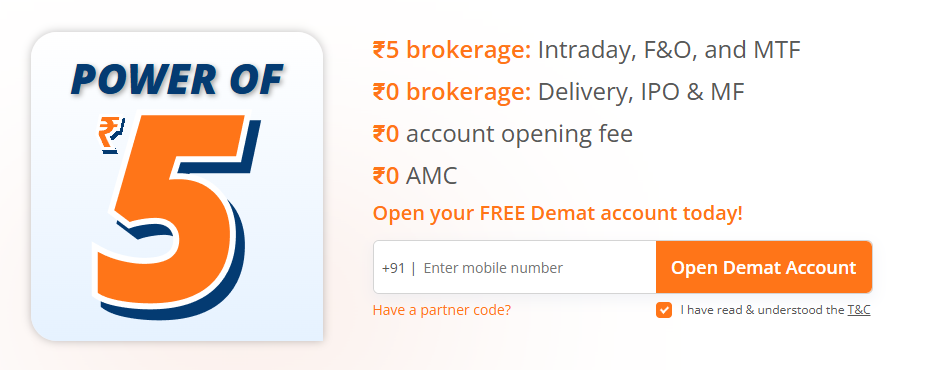
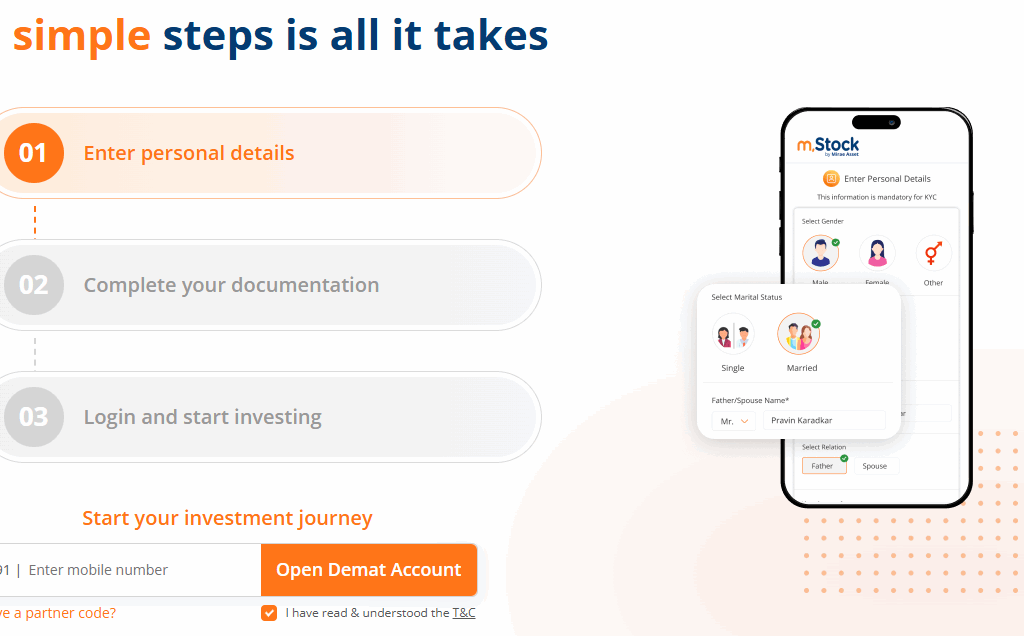
-
Indian Stock Market Today: Full Analysis + Tomorrow Outlook
Nifty Market Analysis Today| Bank Nifty Prediction| Fin Nifty Levels| Midcap Market Outlook| Indian Stock Market Today 📌 Index Performance…
-
Cloudflare Global Outage: What Happened and How It Impacted the World & India
Cloudflare Outage 2025| Cloudflare Outage| Cloudflare Down| Website Outage| CDN Issue| India Internet Issue| Global Internet Outage| DNS Failure| Tech…
-
India US tariffs Trade Deal Nears First Phase: Big Boost for Exporters, Mixed Impact on Domestic Industries
India US trade deal 2025| India US tariffs| Indian exporters impact India and the United States are reportedly close to…

